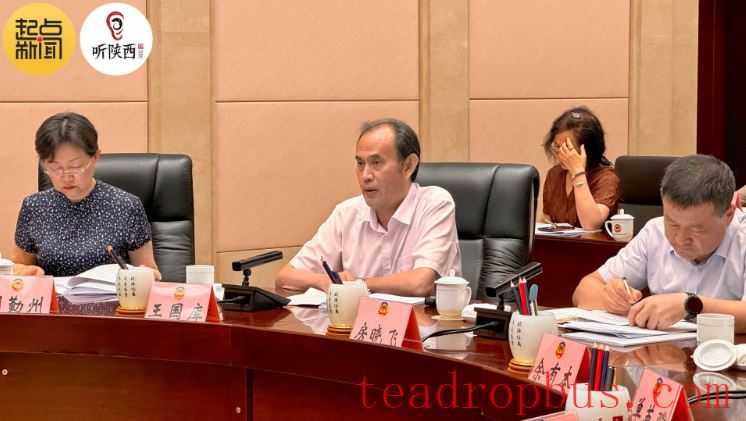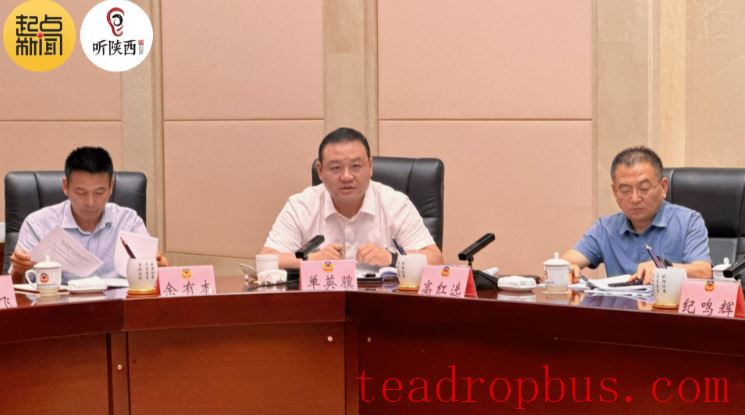Tea is one of the world's three major beverages, and the tea industry is not only a health and ecological industry but also a pillar industry for rural revitalization and a people-enriching industry for farmers' income growth in tea-producing areas. How can we build a trillion-yuan Shaanxi tea industry to support high-quality rural revitalization? At the consultative symposium convened by the provincial committee of the CPPCC today (July 31), members of the provincial committee of the CPPCC, leaders of municipal and county CPPCCs, and experts and scholars actively provided policy advice.
South Shaanxi is located at the northernmost point of China's natural tea distribution, while Xianyang in Guanzhong is an important base for the Pu-er tea industry. As a distinctive and advantageous agricultural industry in Shaanxi, the tea industry plays a crucial role in increasing farmers' income, consolidating poverty alleviation achievements, and promoting rural revitalization in South Shaanxi and the Guanzhong tea region.
Since the 14th Five-Year Plan period, Shaanxi has listed the tea industry as one of the five trillion-yuan modern agricultural industrial chains for priority development, aiming to stabilize the province's tea plantation area at 3 million mu (approx. 200,000 hectares) by 2025, with total tea production reaching over 150,000 tons and comprehensive output value exceeding 100 billion yuan, entering the ranks of China's trillion-yuan tea industry powerhouses.

To accurately diagnose the development of the Shaanxi tea industry, the proposal committee of the provincial committee of the CPPCC organized CPPCC members and experts to conduct research in the South Shaanxi and Guanzhong tea regions and investigate tea industry development in Fujian and Henan provinces.
Kingu Wang, member of the provincial committee of the CPPCC and second-level inspector of the CPPCC of Ankang: “Overall, the Shaanxi tea industry exhibits low tea yield per unit area, lagging selection, breeding, and utilization of superior varieties, a large proportion of old tea gardens, slow clonal propagation, low garden standards, relatively crude production management, and severe inadequacy in mechanization; the marketing strength that determines product market entry is relatively weak, and local processing of tea products is insufficient.”
Last year, the China Agricultural Brand Research Center evaluated the value of 118 regional public tea brands, none of which from Shaanxi's Ankang Rich Selenium, Hanzhong Immortal Tip, Hanzhong Red, or Jingyang Pu-er entered the top 20. Compared with the top three—West Lake Longjing, Pu'er Tea, and Xinyang Maojian—their brand values still show significant gaps.
In the view of Yingji Shan, a specially appointed expert in the talent pool for political consultation and deliberation of the provincial committee of the CPPCC, currently, the main bottlenecks restricting Shaanxi from achieving a trillion-yuan tea industry chain include low commercial levels, low value chains, single products, weak brand values, and obvious homogeneous competition.

Shan believes that the Shaanxi tea industry can improve its overall benefits through business model innovation, increased product variety, construction of new sales channels, and layout of new consumption scenarios.
“Can we guide the tea industry to transform from per capita ‘quantity' consumption to per capita ‘frequency' consumption, such as Honeycoco in Henan, Naixue's Tea, and Heytea in Guangdong, targeting the youth market and high-frequency consumption?”
As a tea science and technology worker, Professor Youben Yu of Northwest A&F University and chief expert of the Shaanxi Tea Industry Technology System suggests strengthening talent cultivation.
“Implement targeted talent cultivation plans for grassroots agricultural technology extension, add tea science majors in some vocational and technical colleges in South Shaanxi and Guanzhong, and strengthen tea science training for professionals through leading figure projects, high-quality farmer cultivation, and vocational skill certification, improving the overall quality of industry personnel.”
Kingu Wang, member of the provincial committee of the CPPCC and second-level inspector of the CPPCC of Ankang, believes that building a trillion-yuan Shaanxi tea industry requires constructing bases of quality and cultivating substantial entities.
“We must concentrate advantageous resources, focus on the main tea-producing areas in South Shaanxi, and work at the city level to build 3 to 5 chain-leading enterprises and at the county level to cultivate 30 to 50 backbone enterprises, thereby strengthening market entities.”
Reporter: Cao Yuanyuan
(Contributing organization: Shaanxi Radio and Television Convergent Media Group · Starting Point News)